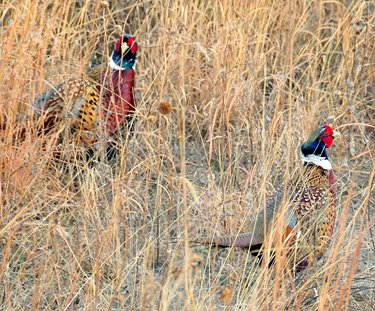
U.S. Department of Agriculture Secretary Tom Vilsack
announced that 800,000 acres will be enrolled through three different components of the Conservation Reserve Program (CRP). Of particular note, USDA’s CRP general sign-up completed at the end of February generated more than 1.8 million acres in offers, but was only able to accept 23 percent of the 26,000 landowner applications because of the program’s 24 million acre cap. As a result, Secretary Vilsack commented on the need for a larger CRP cap to meet landowner demand and natural resource benefits.
In addition to the general CRP sign-up, Secretary Vilsack also reported 4,600 additional offers were made for 1 million acres in the new CRP Grasslands program. Only 100,000 acres were accepted for a meager 10 percent acceptance rate. Finally, an additional 330,000 acres were enrolled through continuous CRP sign-ups, which is in addition to last year’s record-setting 860,000 continuous acres enrolled.
Vilsack later commented
to AgriPulse, “When Congress begins to deliberate the 2018 farm bill, they're going to be faced I think with a demand to rethink the cap on CRP,” Vilsack said. “The deliberation should not begin with ‘You have to save an artificial dollar amount,' but it should really look at what the demand and need is.”
“While we have 800,000 acres of good news today, the larger message is one of missed opportunity,” stated Dave Nomsen, Pheasants Forever’s vice president of governmental affairs. “We had landowners come out in droves to voluntarily make a commitment to wildlife, water, and soil. Instead, America’s most successful conservation program – one with a 30-year track record of wildlife and natural resource benefits – was neutered by a 24 million acre cap.”
“As we look toward the 2018 Farm Bill, we will be delivering Secretary Vilsack’s message of a strengthened CRP to Congress. America’s farmers, ranchers, conservationists, and hunters not only need a stronger Conservation Reserve Program, they want a stronger CRP, and the latest sign-up results demonstrate that fact,” added Jim Inglis, Pheasants Forever’s director of governmental affairs.
CRP is a voluntary program designed to help farmers, ranchers and landowners protect their environmentally sensitive land. Eligible landowners receive annual rental payments and cost-share assistance to establish long-term, resource conserving covers on eligible farmland throughout the duration of 10 to 15 year contracts. Under CRP, landowners plant grasses and trees, and restore wetlands in watersheds across the country. The plantings prevent soil and nutrients from washing into waterways, reduce soil erosion that may otherwise contribute to poor air and water quality, and provide valuable habitat for wildlife. Vegetative cover established on the acreage accepted into the CRP will reduce nutrient and sediment runoff in our nation’s rivers and streams.
About Pheasants Forever
Pheasants Forever, including its quail conservation division, Quail Forever, is the nation's largest nonprofit organization dedicated to upland habitat conservation. Pheasants Forever and Quail Forever have more than 149,000 members and 700 local chapters across the United States and Canada. Chapters are empowered to determine how 100 percent of their locally raised conservation funds are spent; the only national conservation organization that operates through this truly grassroots structure. Since creation in 1982, Pheasants Forever has spent $634 million on 502,000 habitat projects benefiting 14.1 million acres nationwide.
Photo: Tom Koerner/USFWS
Media Contact
Jared Wiklund
(651) 209-4953
jwiklund@pheasantsforever.org